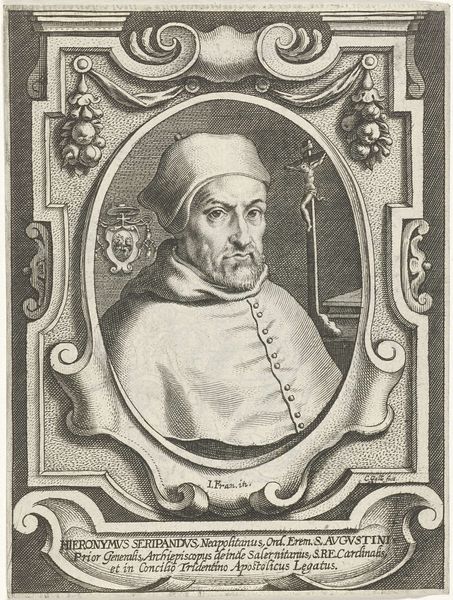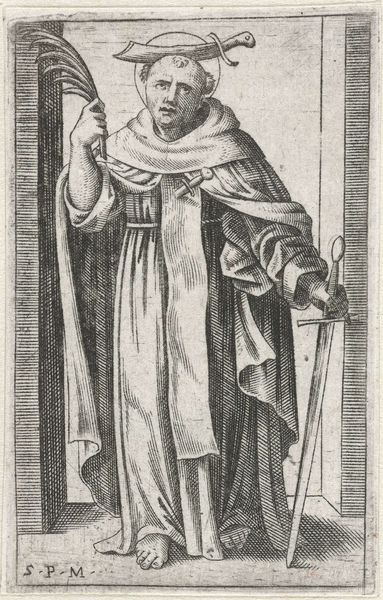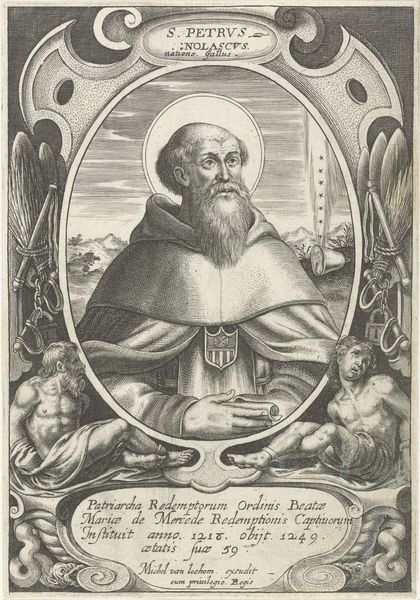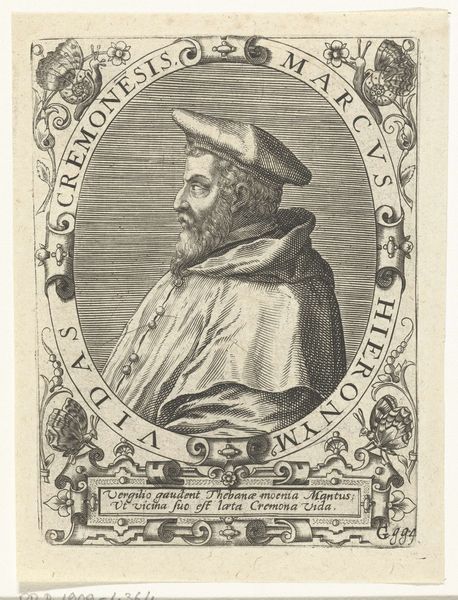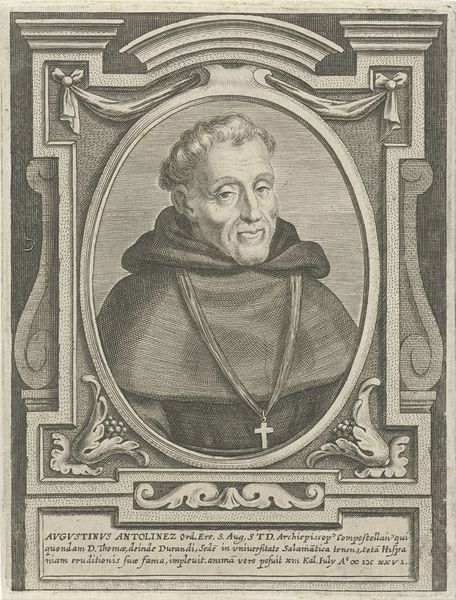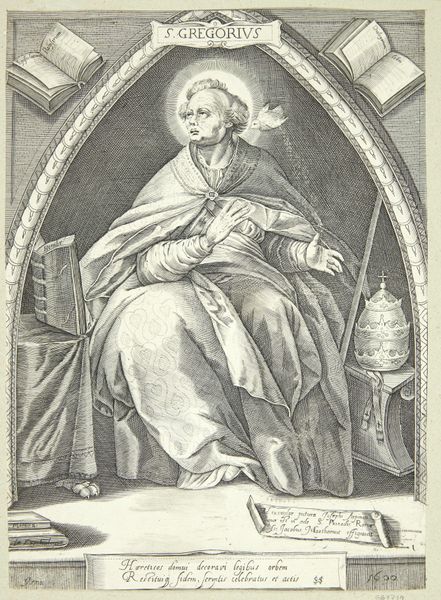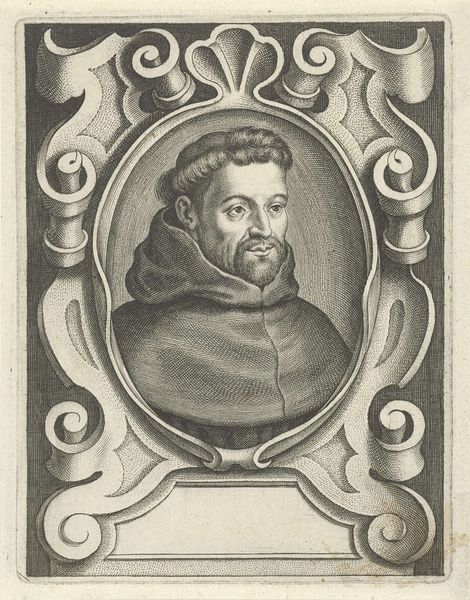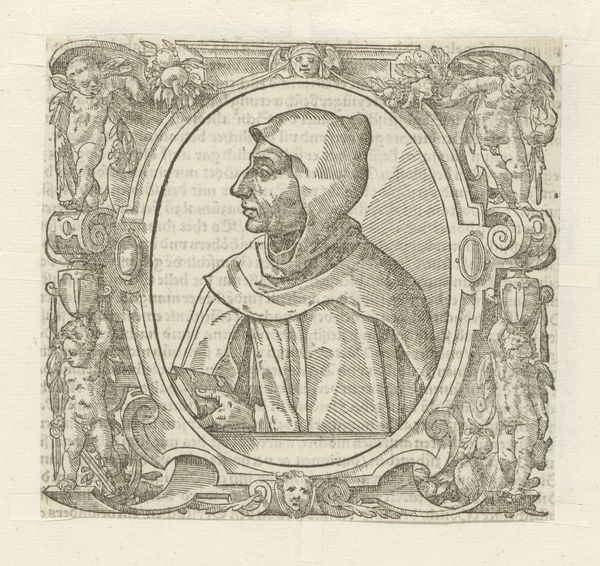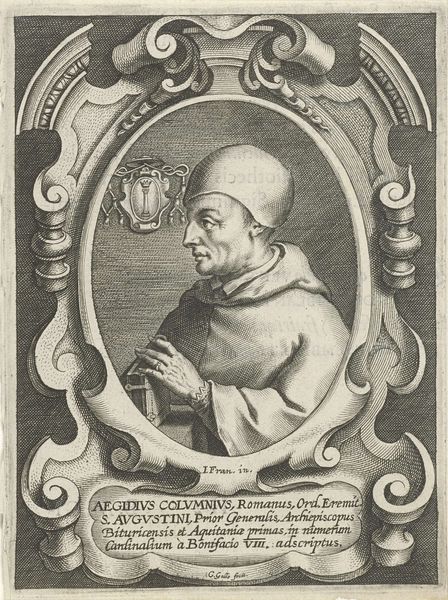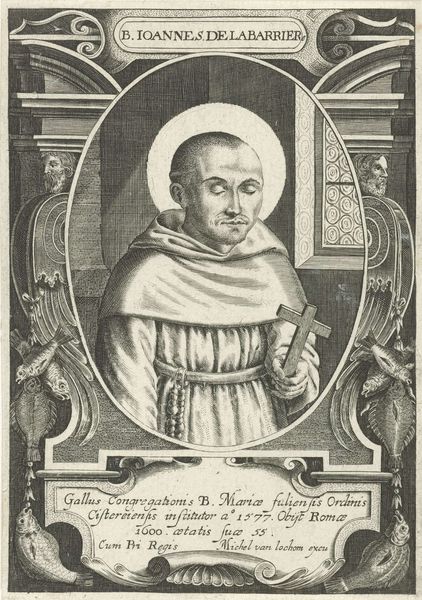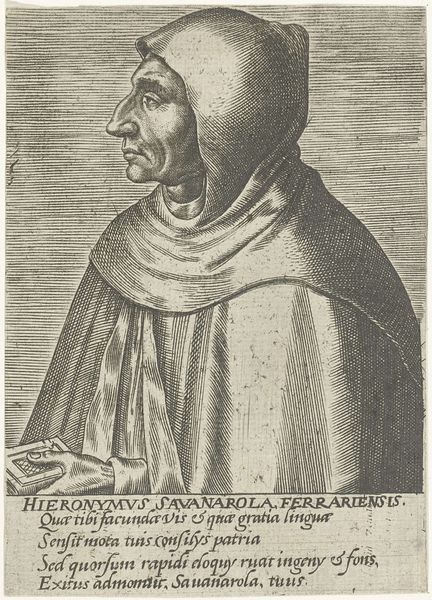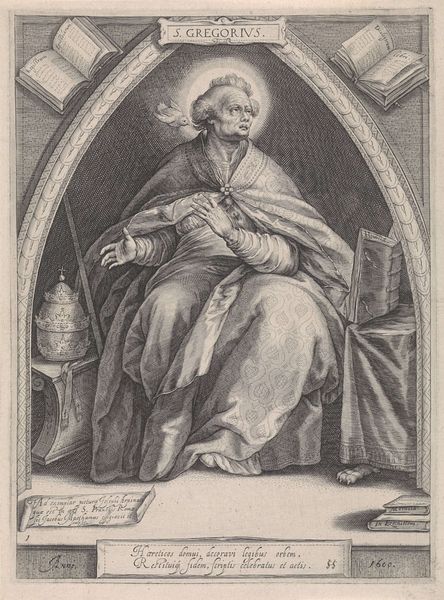
engraving
#
portrait
#
baroque
#
engraving
Dimensions: height 145 mm, width 103 mm
Copyright: Rijks Museum: Open Domain
Curator: Look at the subtle yet dynamic interplay of lines that shape the form. Notice how light falls—especially that striking beam against the rough brickwork—it’s masterfully rendered and creates such a contemplative atmosphere. Editor: Indeed. What strikes me about this engraving is its depiction of the subject—this is the "Portrait of Saint John of the Cross," likely created between 1611 and 1647 by Michel van Lochom. Curator: The social and historical positioning of John of the Cross is fascinating; he was a major figure in the Catholic Reformation, and seeing him depicted here, nearly two decades after his death, provides such interesting insight. Editor: He’s rendered within a rather complex oval frame, isn’t he? The artist’s commitment to rendering texture and depth is particularly notable, especially the face and clothing. It invites us to contemplate the spiritual significance attributed to the saint. Curator: And the inscription! We can clearly see at the base that van Lochem has provided important historical context. There are clear ties to the reformation, positioning St. John within a network of religious movements and figures—the engraving acting almost like propaganda, reaffirming religious convictions in that period. Editor: It’s more than just its face value as propaganda, though, surely? I am fascinated by the use of light. The source isn't visible, and there's a tension created by it emanating from behind what looks like prison walls, casting dramatic shadows. Curator: Good point—perhaps this symbolic usage alludes to St. John's imprisonment, a challenging period in his life from which emerged his celebrated mystical writings. Editor: It definitely enriches our viewing of van Lochom's portrayal of the saint. Seeing him caught in the constraints of a rough engraving allows for a stark depiction of resilience. Curator: For me, analyzing this work provides insights into religious and political life. It exemplifies how printed imagery reinforced particular narratives and power structures. Editor: For me, it is the intrinsic interplay between line, texture, and shadow—that makes this particular engraving more than just historical artifact.
Comments
No comments
Be the first to comment and join the conversation on the ultimate creative platform.

